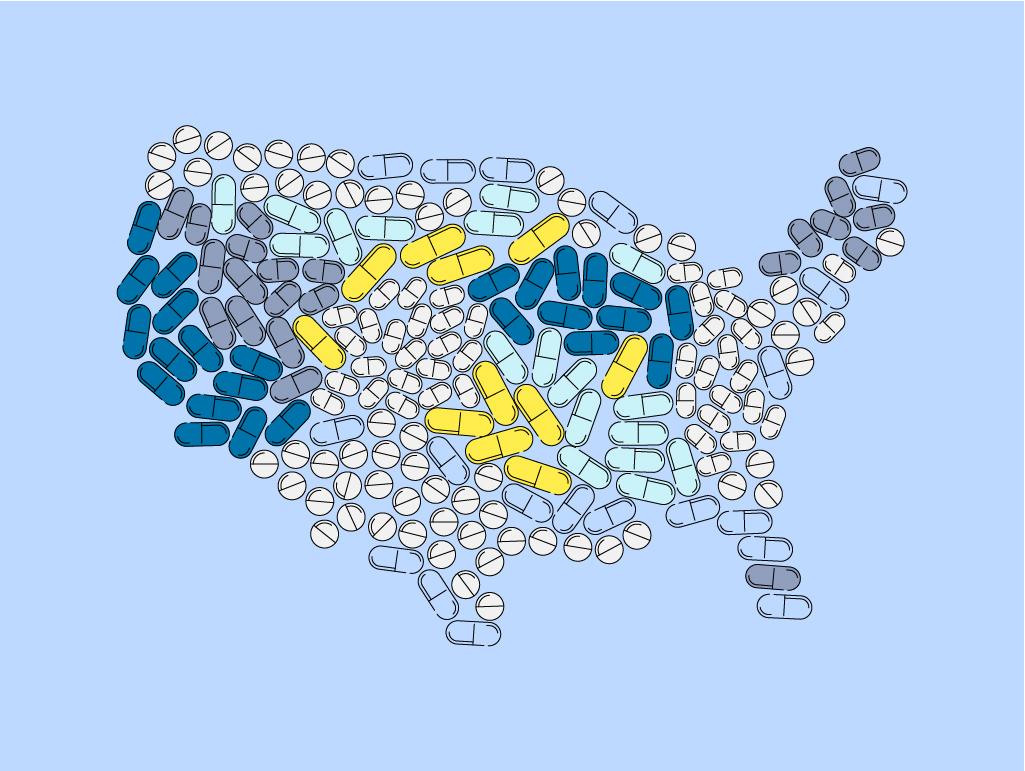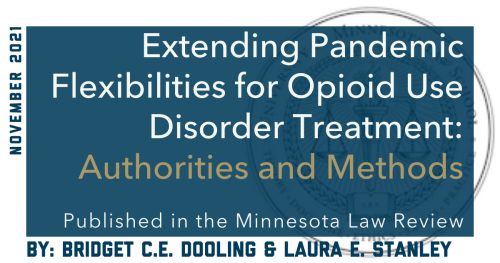Extending Pandemic Flexibilities for Opioid Use Disorder Treatment
Extending Pandemic Flexibilities for Opioid Use Disorder Treatment Reports
These reports are authored by GW Regulatory Studies Center scholars Bridget C.E. Dooling and Laura E. Stanley with support from The Pew Charitable Trusts.
A Vast and Discretionary Regime
Federal Regulation of Methadone as a Treatment for Opioid Use Disorder
Published August 12, 2022
Methadone is an effective treatment for opioid use disorder, which makes it a key tool to address the opioid crisis. Paradoxically, regulations—particularly at the federal level, which is the focus of this report—greatly limit access to methadone when it is used to treat opioid use disorder. As policymakers consider what they can do to make it easier for people to begin and continue treatment, it is important to understand which changes regulators can make on their own by drawing upon existing statutory authority, and which changes would require an act of Congress.
Working through each group of regulations, this report explains the rules and how they function as barriers. Then, the report finds that in almost every instance, federal regulators have clear statutory authority to amend or remove these regulatory barriers to treatment. It also explains the legal steps that agencies can take to make changes. This report is limited to questions of legal authority, to clarify whether the agencies possess discretion to pursue policy changes. An important next step will be to determine which changes to make, a complex decision that should draw upon the best available evidence. What this report makes clear is that federal agencies have discretion to lower barriers and improve access to methadone treatment for opioid use disorder. The question is: how will they use it?
Telemedicine & Initiating Buprenorphine Treatment
Published February 23, 2021
Do federal regulatory agencies have the authority to extend flexibilities for the treatment of opioid use disorder beyond the COVID-19 pandemic?
Bridget C.E. Dooling and Laura E. Stanley provide details on the rulemaking background for medical practitioners and policy makers, and layout their findings on what the Drug Enforcement Administration and Substance Abuse & Mental Health Services Administration can do going forward.
Unsupervised Use of Opioid Treatment Medications
Published April 22, 2021
In response to the COVID-19 public health emergency, the Substance Abuse and Mental Health Services Agency (SAMHSA) made it easier for patients to receive take-home supplies of methadone and buprenorphine. This report explores the effects of this policy change, and explains why SAMHSA has the legal authority to extend this flexibility beyond the pandemic to help treat opioid use disorder.
Related Content from the GW Regulatory Studies Center
Extending Pandemic Flexibilities for Opioid Use Disorder Treatment: Authorities and Methods
This Minnesota Law Review article evaluates two specific flexibilities granted during the COVID-19 pandemic that made it easier for patients to access buprenorphine and methadone. First, the Drug Enforcement Administration (DEA) allowed practitioners to prescribe buprenorphine using telemedicine without first conducting an in-person medical exam. Second, the Substance Abuse and Mental Health Services Administration (SAMHSA) made it easier for patients to have a take-home supply of methadone, reducing many patients’ need to make a daily trip to an opioid treatment program. The White House Office of National Drug Control Policy indicated that extending pandemic flexibilities for treating opioid use disorder is a priority for the Biden Administration, and this Essay provides a roadmap for the executive branch to do so.
While Congress could certainly make the changes permanent through legislation, this Essay provides an independent assessment of whether DEA and SAMHSA have the statutory authority to extend these flexibilities after the COVID-19 public health emergency ends by making changes to their regulations using the notice-and-comment rulemaking process under the Administrative Procedure Act (APA). The main finding is that DEA and SAMHSA have regulatory mechanisms available to extend the flexibilities described above. In addition, the U.S. HHS Secretary’s opioid-specific public health emergency declaration could offer a longer term, but still impermanent, legal pathway to extend these flexibilities beyond the current pandemic.
We need smart solutions to mitigate the coronavirus’s impact. Here are 46.
"The coronavirus crisis has upended American life, and fresh ideas are needed for dealing with the problems it’s creating. Here is a collection of smart solutions." - Washington Post
Laura Stanley's essay was featured as one of the Washington Post's smart ideas to reduce the impact of the coronavirus on our lives.
Read Laura's full essay: Bring back the methadone vans
The pandemic broke through opioid treatment red tape. Let’s keep it that way.
"People struggling with opioid use disorder deserve increased access to telemedicine treatment after the pandemic, and federal regulators have the power to make it happen. The Biden administration should act now to preserve this flexibility."
Bridget Dooling and Laura Stanley's op-ed in the Philadelphia Inquirer argues that one thing the federal government got right during the pandemic was making it easier for people to begin opioid use disorder treatment.
Podcast
Laura Stanley joins GW Regulatory Studies Center communications and outreach manager Bryce Chinault to discuss related regulations at the Drug Enforcement Administration.
A Last-Minute Attempt to Partially X the X Waiver
The Trump administration made a last-minute attempt to provide flexibilities for prescribing buprenorphine to treat opioid use disorder. The Biden administration changed course and decided not to publish the associated guidelines due to legal and policy concerns. Although HHS appears to have the legal authority to provide exemptions from buprenorphine requirements, taking time to ensure flexibilities are legally defensible will promote the uptake of the policies in the long term.
Read Laura Stanley's full Commentary: A Last-Minute Attempt to Partially X the X Waiver



